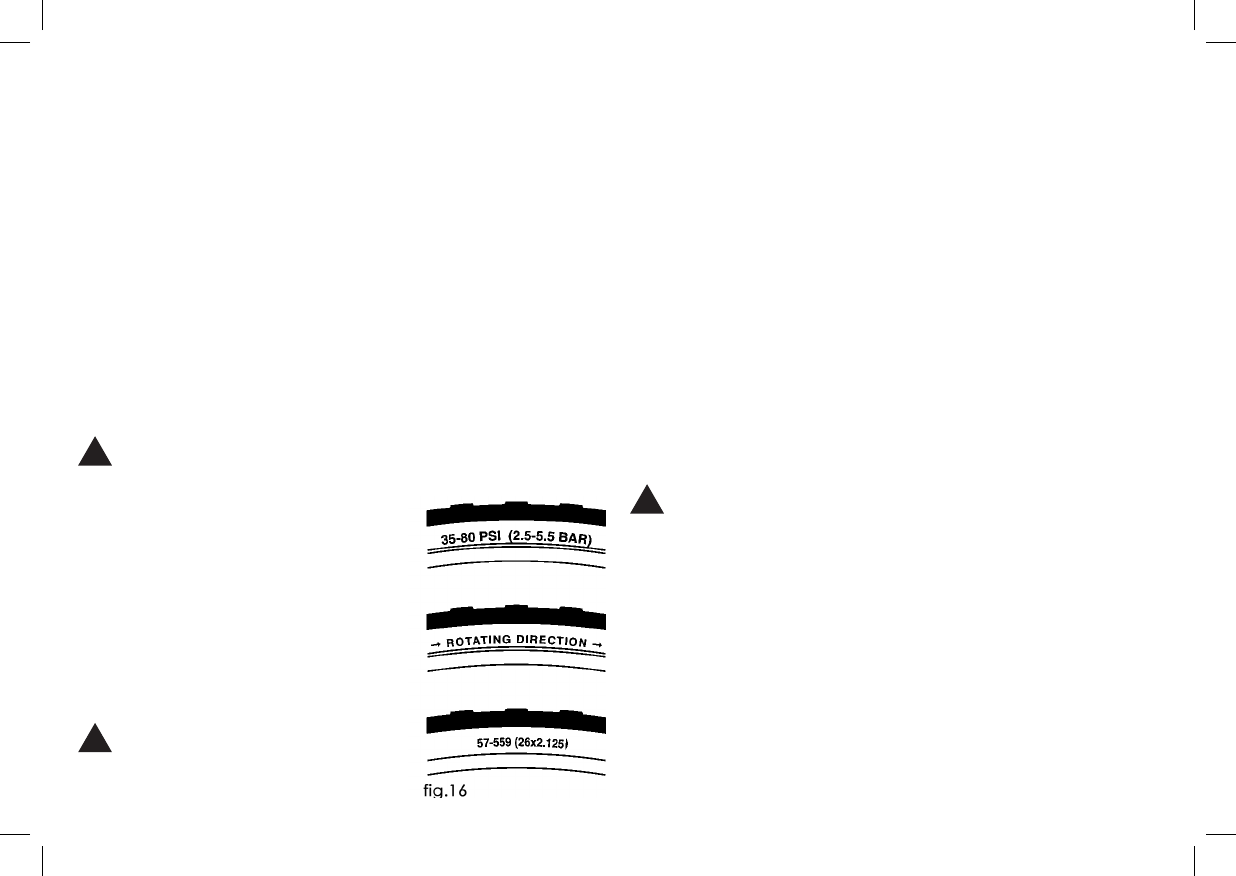
20
to make sure that what you want to do is compatible with the
bicycle’s design.
E. Tires and Tubes
1. Tires
Bicycle tires are available in many designs and
specications,rangingfromgeneral-purposedesignstotires
designedtoperformbestunderveryspecic weather or
terrain conditions. If, once you’ve gained experience with
your new bike, you feel that a different tire might better suit
your riding needs, your dealer can help you select the most
appropriate design.
The size, pressure rating, and on some high-performance
tires the specific recommended use, are marked on the
sidewallofthetire(seeg.16).Thepartofthisinformation
which is most important to you is Tire Pressure.
!
WARNING: Never inate a tire beyond the maximum
pressure marked on the tire’s sidewall.
Exceeding the recommended
maximum pressure may blow the
tire off the rim, which could cause
damage to the bike and injury to
the rider and bystanders.
Thebestandsafestwaytoinate
a bicycle tire to the correct pressure
is with a bicycle pump which has a
built-in pressure gauge.
!
WARNING: There is a safety risk
in using gas station air hoses or other
air compressors. They are not made
for bicycle tires. They move a large volume of air very rapidly,
and will raise the pressure in your tire very rapidly, which could
cause the tube to explode.
Tire pressure is given either as maximum pressure or as a
pressure range. How a tire performs under different terrain or
weatherconditionsdependslargelyontirepressure.Inating
the tire to near its maximum recommended pressure gives the
lowestrollingresistance;butalsoproducestheharshestride.
High pressures work best on smooth, dry pavement.
Very low pressures, at the bottom of the recommended
pressure range, give the best performance on smooth, slick
terrain such as hard-packed clay, and on deep, loose surfaces
such as deep, dry sand.
Tire pressure that is too low for your weight and the riding
conditions can cause a puncture of the tube by allowing the
tiretodeformsufcientlytopinchtheinnertubebetweenthe
rim and the riding surface, or damage the wheel rim, making
the wheel unsafe.
!
CAUTION: Pencil type automotive tire gauges can be
inaccurate and should not be relied upon for consistent,
accurate pressure readings. Instead, use a high quality
dial gauge.
Ask your dealer to recommend the best tire pressure for
the kind of riding you will most often do, and have the dealer
inateyourtirestothat pressure.Then,checkinationas
describedinSection1.Csoyou’llknowhowcorrectlyinated
tires should look and feel. Some tires may need to be brought
up to pressure every week or two.
Some special high-performance tires have unidirectional
treads: their tread pattern is designed to work better in
one direction than in the other. The sidewall marking of





















